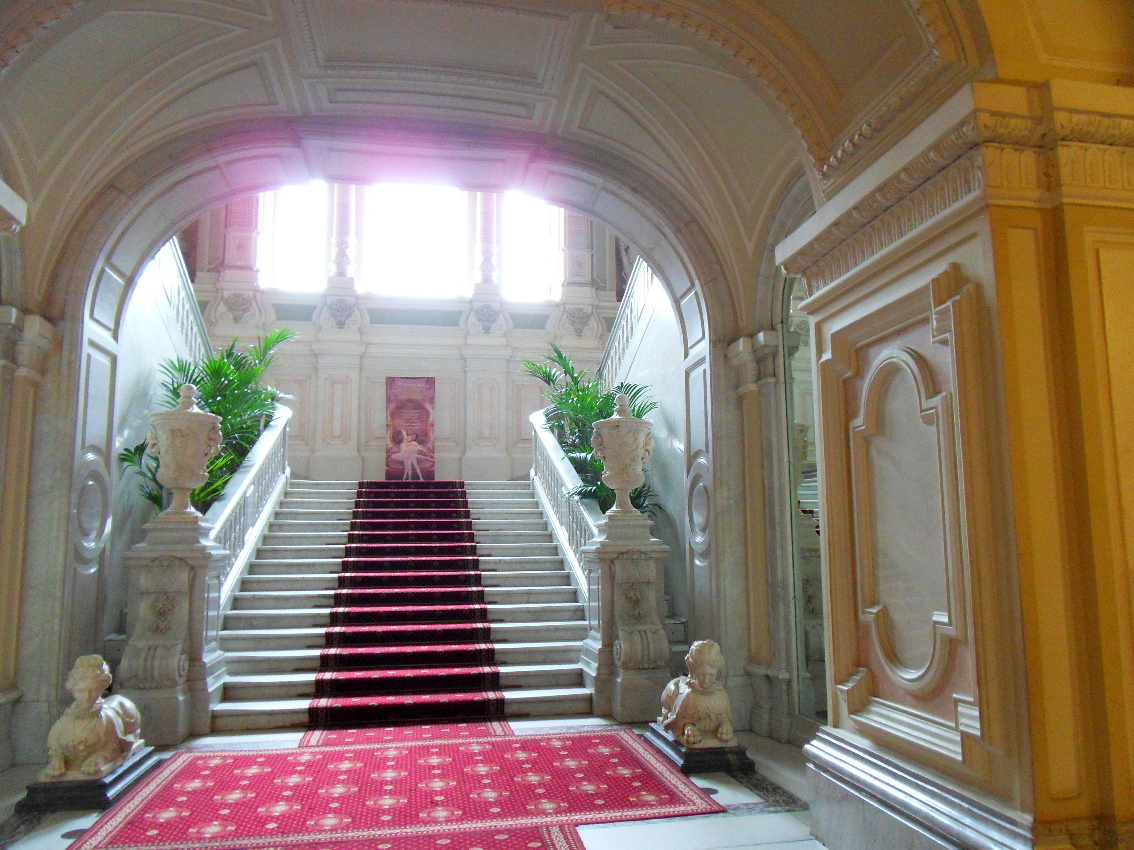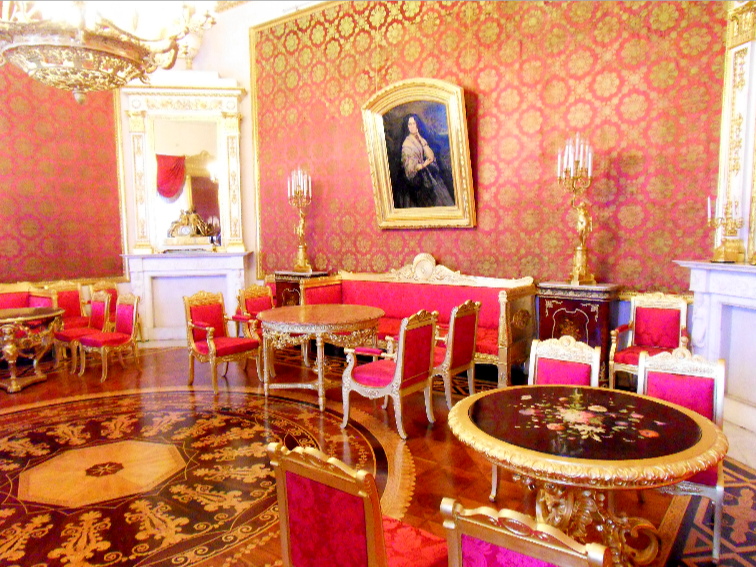| |
Other pages you may find of interest
St Petersburg
Cathedrals of St Petersburg
Hermitage
Peter & Paul Fortress
Peterhof Palace
Catherine's Palace
| |
|
Russia
St Petersburg
Yusupov (Moika) Palace

Originally a small timber property built in the 1770’s on the banks of the River Moika for the niece of Tsar Peter I. It was to grow into one of St Petersburg's finest palaces.
In 1795 it was obtained by Catherine II who gave it to her lady-in-waiting Countess Alexandra Branicka, the niece of one of her favourites - Grigory Potemkin. The Palace was acquired by Nickolai Yusupov in 1830, when it became known as the Yusupov Palace. The Yusupovs owned 57 palaces which included four in St Petersburg. In fact, the wealth of the Yusupovs rivalled that of the Tsar. The family could trace their lineage back over 1000 years and they served the Russian Tsars since the time of Ivan IV in the 14th century until 1917.
The Yusopovs had one of the country’s greatest private collections of paintings and sculptures; started by Nickolai. His collection comprised of works from some of the finest artists and sculptors of his time and his expertise and contacts resulted in Catherine II and Paul I using him to build up the collection of the Hermitage and Tsarskoye Selo (Catherine’s Palace) as well as other palaces. The subsequent members of the Yusupov family continued to develop the palace and the art collection.
At the time of the Bolshevik Revolution in 1917 the Yusupovs were the richest family in Russia. Their collection of art, sculptures and jewellery amounting to more than 40,000 items was confiscated following the revolution and placed in the State Hermitage and other museums. In 1917 the palace was used as the Swedish and German embassies, which was a crucial factor in its not having been ransacked following the revolution. In 1925 the palace was taken over by the city's Education Commissariat, and today it is held by the Cultural Centre of Education Workers.
During World War II the palace was struck by a bomb and many of the rooms were damaged, but have subsequently have been repaired and restored to their former glory.
Although the façade, with its classical six-column portico, is striking it does not indicate the beauty and affluence of the interior. The Palace was developed over the years in a variety of architectural styles including Gothic, Renaissance, Oriental, Rococo and Historicism, making it one of the most beautiful palaces in St. Petersburg.
The Palace is noted for the opulence of the interior and its decorations which include wood and stone carving and multi-coloured marble. Many of the rooms are decorated in different styles and contain gilded chandeliers, silks, frescoes, tapestries and beautiful furniture.
The ground floor includes the Turkish Study and Moorish Drawing Room and leads to the cellar, where on 17th December 1916 the murder of Grigori Rasputin took place. Since 1919, it has housed a display of the wax figures of the members of the plot, including the Grand Duke Dmitri Pavlovich (a cousin of Nicholas II) and Felix Yusupov, together with the figure of Rasputin himself.
The motive for the murder was to remove the influence that Rasputin had over the Tsarina Alexandra and subsequently over the Tsar himself. Rasputin’s murder was an extremely difficult act to carry out. He managed to survive poison, gunshots and beatings. His demise was finally accomplished when he was cast into the icy Moyka River. Felix and Prince Dmitry were accused of murder and fled the country. An act which undoubtedly saved their lives following the revolution.
Ascending the stairway to the first floor we find the ballroom and banquet hall. There is also the White Columned Room, where musicians perform short concerts throughout the day; The Red Drawing room is also called the Imperial Drawing Room as a result of the portraits of the Tsars which are displayed in the room. We also find The Blue Drawing room with its white marble walls and blue panels and gilded décor and ornate ceiling.
Also to be seen is the ornate Russian Baroque private theatre which is richly decorated by elegant gilt modelling with its boxes and balconies and also the Oak Dining Room, finished with carved panels and decorated with the family coats of arms and which provides a view onto the staircase. There are also numerous other spectacular rooms all of which convey an image of life in the time of the Yusupovs.





To see more photographs and take a virtual tour of the site click on the photoshow below.







